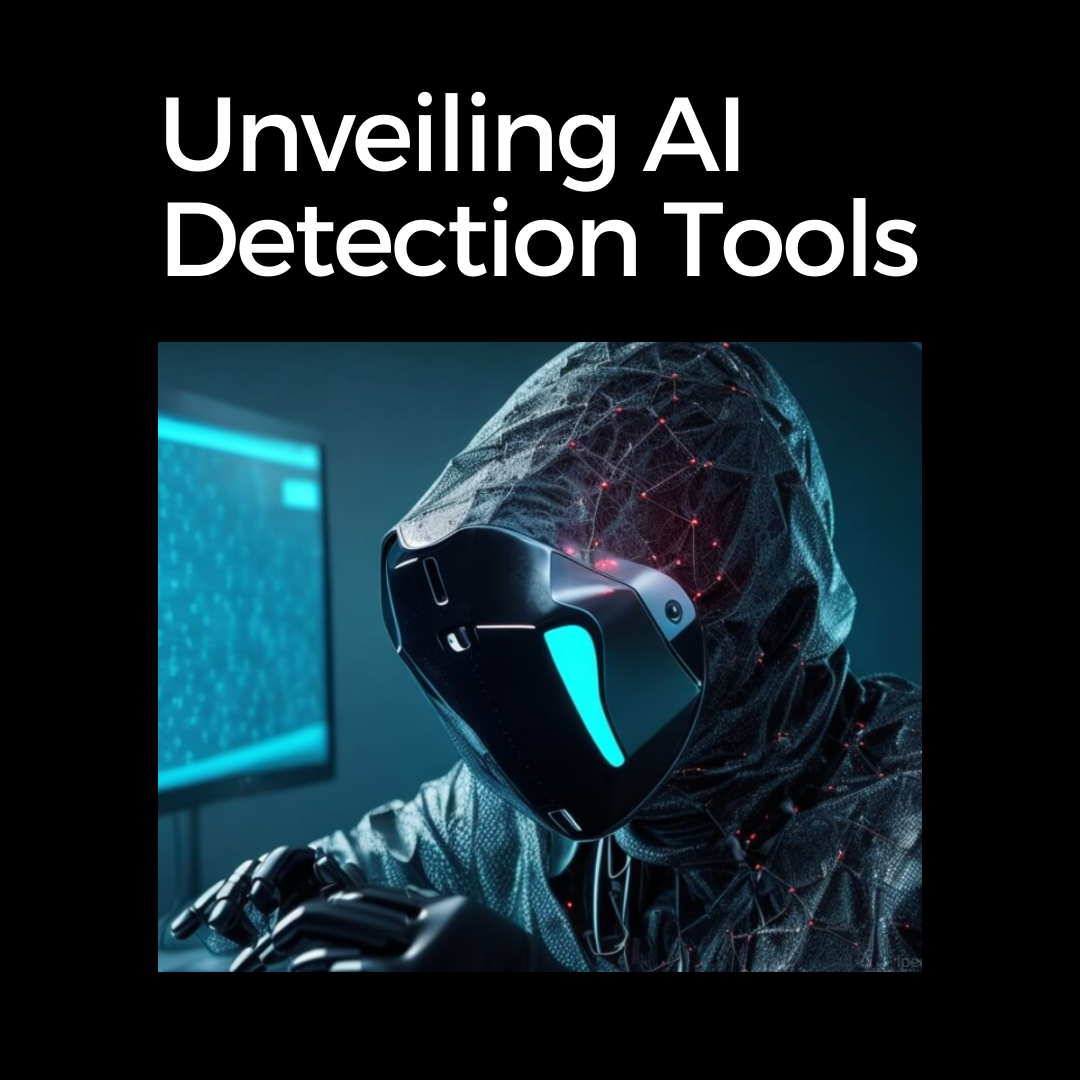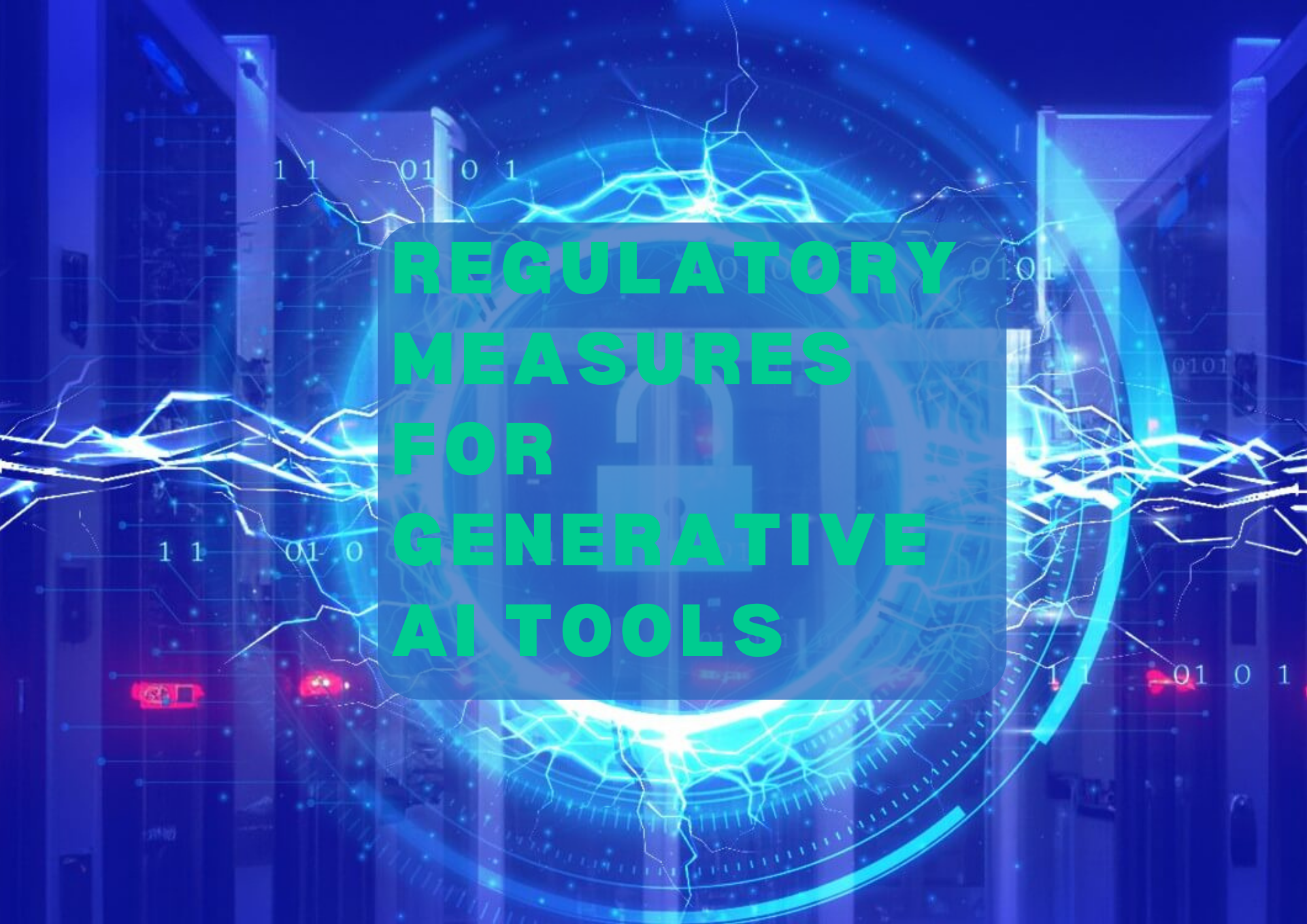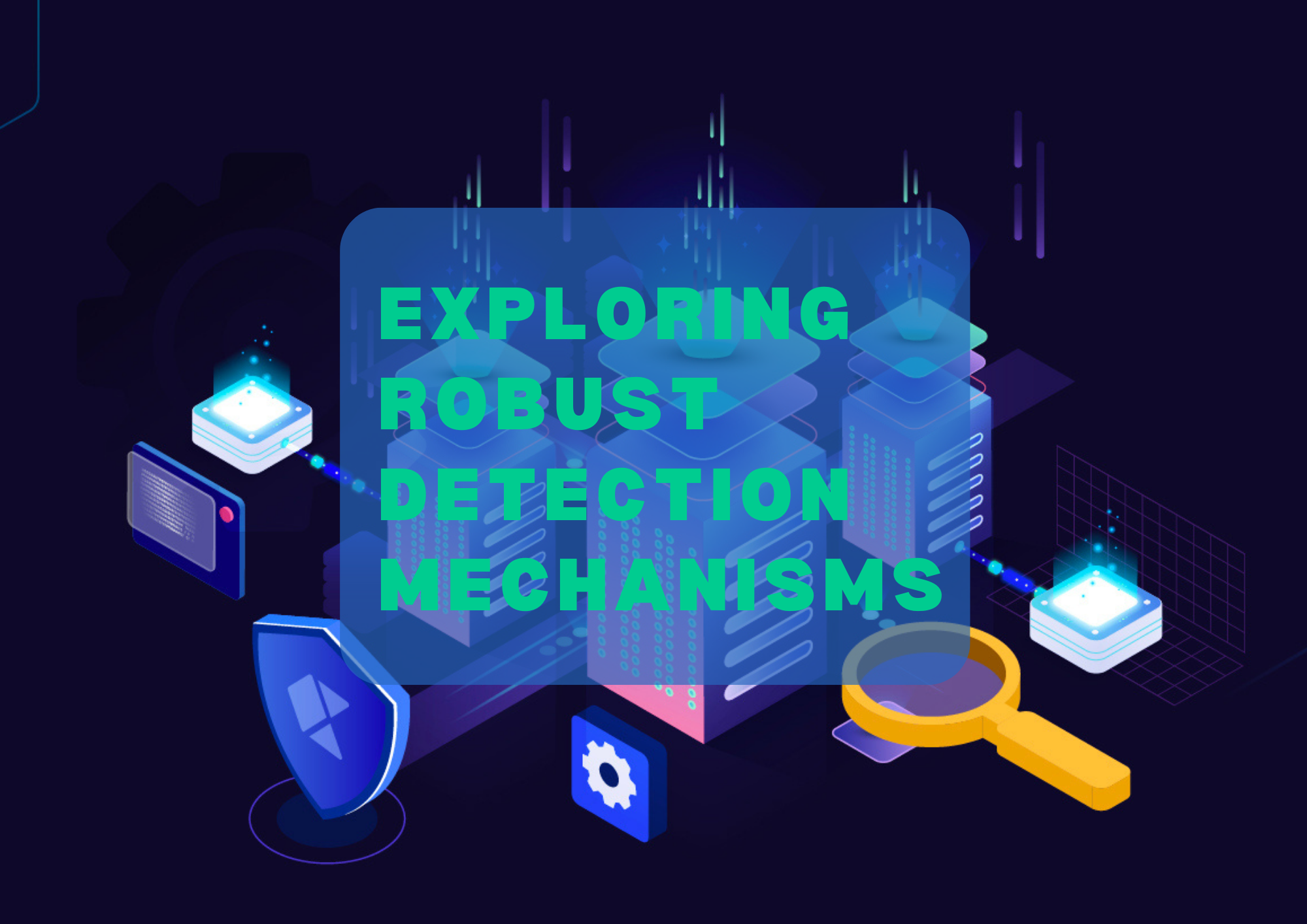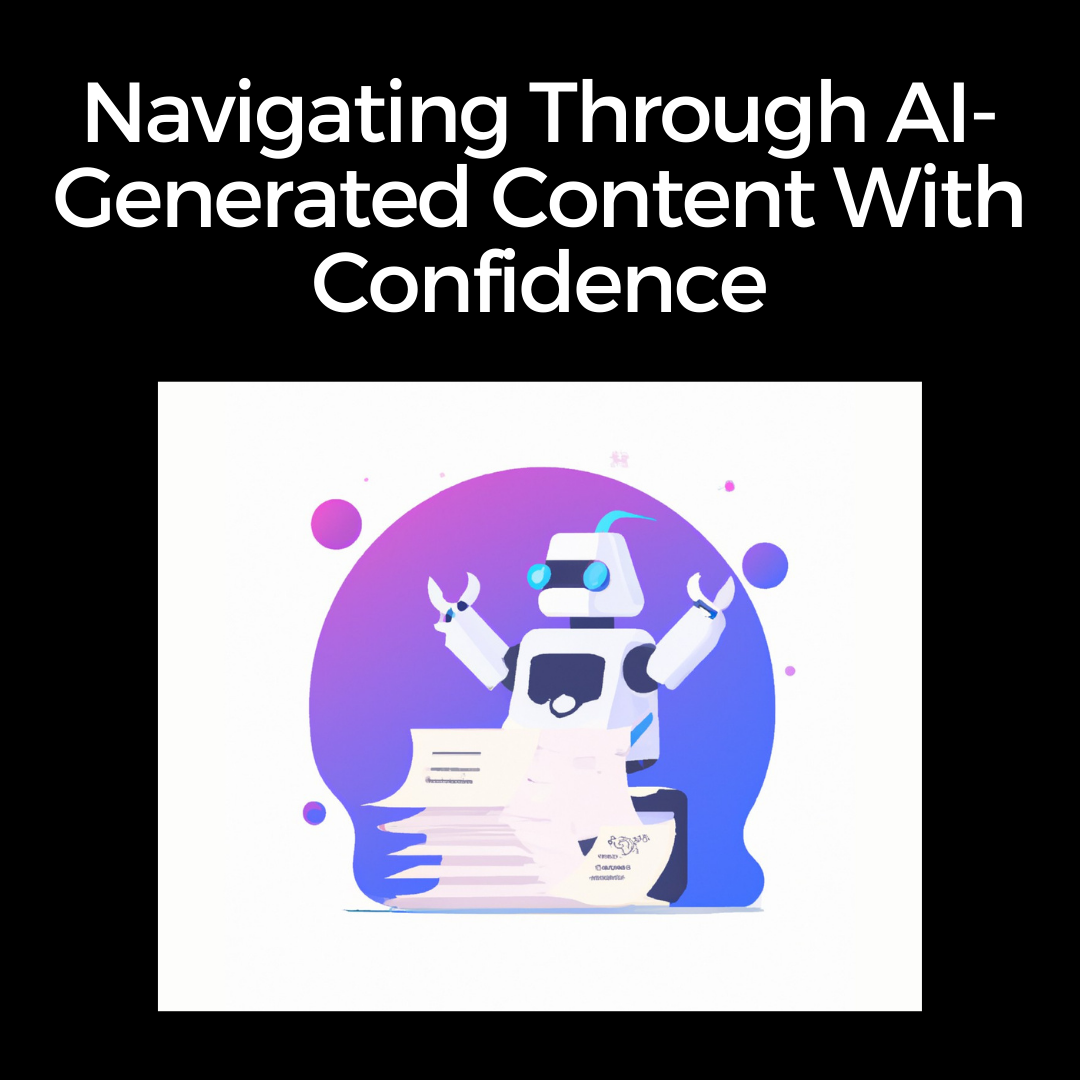What is AI Detection and Why Does it Matter?

What is AI detection, you ask? Well, let’s dive right in.
In the world of artificial intelligence and machine learning, it’s a buzzword that has everyone talking. But what does it really mean?
The concept can seem as complex and intimidating as building a team from scratch – something many entrepreneurs dread.
But here’s the thing…
Understanding AI detection isn’t just for tech gurus or data scientists. It’s crucial knowledge for anyone navigating today’s digital landscape.
Unveiling AI Detection Tools

The digital sphere is rapidly transforming, and AI has become a major factor in this shift.
In particular, artificial intelligence detection tools have become an integral part of online content management systems.
The Purpose of AI Detection Tools
A crucial function these tools serve lies in their ability to identify patterns and similarities within a vast array of data.
This feature allows for the efficient categorization and analysis of information on a scale that would be impossible for humans alone to manage effectively.
Detecting ChatGPT-Generated Research Articles
An emerging concern among professionals utilizing such technologies pertains to the authenticity of articles generated by popular AI tool ChatGPT. To address this issue, many are turning towards trained machine learning algorithms as reliable AI detection tools collect invaluable insights into whether or not specific pieces were indeed created or written by a human or human authors. Mitigating Concerns with Advanced Technology.
Taking advantage from advanced technology like unsupervised machine learning techniques helps us detect any high likelihood instances where ChatGPT-generated research may pass off as authentic work. This makes it easier than ever before for users across various platforms ensure they’re dealing only with genuine material rather than potentially misleading synthetic texts.
In our next section we’ll dive deeper into how exactly these powerful machine learning algorithms play their role in detecting AI generated contents.
The Power of Machine Learning Algorithms in AI Detection

AI detection tools harness the power of machine learning algorithms to identify patterns and similarities, making them indispensable assets in today’s digital landscape.
These sophisticated systems utilize both supervised and unsupervised machine learning techniques. Supervised techniques rely on pre-existing data sets for training detection models, enabling these algorithms to predict outcomes based on input variables. On the other hand, unsupervised methods like clustering algorithms discover hidden patterns or structures within unlabelled data.
Understanding Natural Language Processing Techniques
Natural language processing (NLP) is another crucial component utilized by AI detection tools. NLP uses computational linguistics that allows computers to understand human languages.
This technology plays a significant role in generating human-like responses as well as understanding complex text-based patterns are a critical aspect when it comes down to detecting ChatGPT-generated research articles which are known for their high likelihood of mimicking human writing styles effectively. Here’s an interesting read about how GPT ai language models mimic humans’ writing style with uncanny accuracy.
An Overview Of Clustering Algorithms In Pattern Recognition
In pattern recognition tasks such as identifying similar content pieces or distinguishing between genuine and fake posts, clustering algorithms come into play. These powerful mechanisms group together similar instances from large datasets based on certain criteria be it semantic similarity or stylistic resemblance which helps enhance the overall performance of online AI content detection tools considerably. Learn more about different types of clustering algorithms here.
The Role of Plagiarism Detection Tools in Identifying AI Content

With the advent of advanced artificial intelligence, plagiarism detection tools have become an essential component for marketers and freelancers alike. These online AI detection tools use sophisticated machine learning algorithms to identify similarities between texts.
Digging Deeper into Plagiarism Detection Techniques
In essence, these popular AI detection tools collect data from various sources and analyze it using natural language processing techniques. They are trained on vast amounts of text data which enables them to spot even subtle instances of copied content with a high likelihood.
Apart from just identifying direct copying or paraphrasing, some advanced systems can also detect more complex forms such as mosaic plagiarism where different pieces are taken from multiple sources and combined together. This is achieved through unsupervised machine learning techniques that allow the system to learn patterns without explicit programming instructions.
Plagiarism detection isn’t limited only to textual content; many modern solutions incorporate multimedia analysis capabilities too. For instance, they can compare ai generated images or videos against databases for potential matches – a crucial feature given today’s multi-format digital landscape. Learn more about this here.
Tackling Challenges Posed by Generative Ai Tools Like ChatGPT
To counteract generative ai like chatgpt-generated research articles, there’s need for robust mechanisms. The key lies not merely in detecting word-for-word copies of ai text writing but understanding context, semantics & overall structure.
This leads us onto our next topic: how social network analysis plays its part in detecting artificially generated content.
Detecting Unnatural Flow Using Machine Learning Algorithms:
In addition to analyzing metadata, machine learning algorithms trained on large datasets can also identify unnatural flow in ai generated text and sentence structure – another telltale sign of machine generation. This approach leverages natural language processing techniques and clustering algorithms designed specifically for pattern recognition.
While no tool offers 100% accuracy in distinguishing human written text from computer program-authored work yet, some tools are very accurate.
Addressing Risks Associated with Generative AI Tools
The debate surrounding generative AI tools, including their potential risks such as plagiarism and disinformation campaigns, is heating up.
In this digital era where machine learning algorithms are generating human-like responses, it’s crucial to discern between human and machine-generated content.
Navigating the Challenges of Plagiarism Detection Techniques
A major concern lies in how easily these trained machine learning algorithms can mimic a writer’s style.
This raises questions about authenticity and originality that popular online AI detection tools, armed with advanced natural language processing techniques, need to address.
Fighting Disinformation Campaigns through Advanced Detection Methods
Beyond plagiarism detection tool capabilities lies another challenge: combating disinformation campaigns powered by artificial intelligence.
To ensure credibility of information shared on social networks or other platforms, robust AI-based writing assistant systems capable of identifying patterns unique to ChatGPT-generated articles must be deployed.
Mitigating Risk Through Investment in Technology Development
An important step towards mitigating these risks involves investing heavily in technologies that can identify similarities between texts generated by humans versus machines.
Sophisticated summary AI detection tools could prove invaluable for ensuring the integrity of published material across various channels.
As we delve deeper into understanding generative AI technology implications further regulatory measures become evident.
This sets us up perfectly for our next discussion point – exploring calls from lawmakers emphasizing regulation over research funding for generative AI tool detections systems.
Regulatory Measures for Generative AI Tools

The rapid advancement of generative AI tools has raised important questions about the need for regulatory measures.
This call to action is not just from concerned citizens but also lawmakers who understand the potential risks associated with these technologies.
Laws and Regulations: A Necessity in Today’s Digital Landscape
In today’s digital landscape, laws and regulations are more than a necessity; they’re an imperative safeguard against misuse.
A recent article on World Economic Forum, discusses how lawmakers have been emphasizing regulation over research funding for detection systems of generative AI tools like ChatGPT.
Fostering Accountability Through Regulatory Measures
An essential aspect of these proposed regulations is fostering accountability among developers and users alike.
To guarantee accountability, there should be well-defined regulations that delineate what is permissible and the consequences for any breaches. This can help deter malicious uses such as disinformation campaigns or plagiarism that might otherwise go unchecked due to lack of oversight.
Moving Towards Transparency With Open Source Policies
An interesting approach towards regulation could involve open source policies which encourage transparency by making algorithms publicly available.
This would allow researchers worldwide access, contributing significantly towards improving AI detection tools.
Promoting Ethical Use Of AI Technology: The Role Of Regulation
The role played by regulators extends beyond simply enforcing rules – it involves promoting ethical use & responsible innovation within the artificial intelligence technology sphere.
Exploring Robust Detection Mechanisms

The rise of generative AI tools has led to an increased need for robust detection mechanisms.
Detection systems like DetectGPT and GPTZero, are designed specifically to identify patterns in content generated by artificial intelligence, thereby ensuring the authenticity of online information.
An Overview of DetectGPT and GPTZero’s Functionality
DetectGPT utilizes trained machine learning algorithms to analyze text data meticulously. This analysis helps it discern between human-written content and that created by Chatbot-like AI models such as OpenAI’s ChatGTP with a high likelihood accuracy rate.
GPTZero, on the other hand, employs unsupervised machine learning techniques alongside natural language processing methods. It identifies similarities within large corpuses of data enabling efficient plagiarism detection among seemingly original pieces.
Necessity For These Tools In The Digital Age
In this era where fake news spreads faster than truth, these ai detection tools collect vast amounts of digital data daily from various sources including social networks. They then sift through them identifying potential misinformation or disinformation campaigns powered by advanced AIs before they wreak havoc on unsuspecting audiences perceptions.
Mitigating Risks Associated With Generative AI Tools Through Detection Mechanisms
We delve into how using reliable AI-based writing assistants can help mitigate risks associated with unverified or plagiarized material circulating online.
Navigating Through AI-Generated Content With Confidence

As we delve deeper into the digital age, understanding and utilizing AI detection tools becomes increasingly crucial.
These artificial intelligence-based systems use trained machine learning algorithms to identify patterns in content, helping us distinguish between human-generated material and that produced by advanced technologies like ChatGPT.
The Importance of Detection Tools
Detection tools are not just important; they’re essential for maintaining integrity within our online spaces. They help ensure authenticity while minimizing risks associated with generative AI tools such as plagiarism or disinformation campaigns.
In this context, popular online AI detection tools become a marketer’s best friend – an ai detection tool allowing them to verify originality before publishing any piece of content on their platform.
Balancing Investment Strategies: Generative vs. Detecting Technologies
Funding is often skewed towards developing more sophisticated generative technologies at the expense of robust detecting mechanisms. This imbalance can lead businesses down a slippery slope where profitability outweighs ethical considerations surrounding information dissemination in cyberspace.
A Look at Regulatory Measures Against Misuse Of Generative Tools
Lawmakers have started emphasizing regulation over research funding for generatively focused Ai tool detections systems. It’s clear that regulatory measures play a vital role in ensuring responsible usage & development when it comes to these powerful technological advancements.
An Introduction To Robust Mechanisms Against Generative Ai Tools
There has been significant progress made recently regarding creating reliable defense against misuse, particularly through solutions like GPTZero & DetectGpt. These platforms provide viable options for those looking to protect themselves from potential harm caused by artificially generated misinformation.
In essence, successfully navigating through AI-generated content requires thorough knowledge about available resources – be it popular AI detection tools, effective balance between investments or utilization of robust defensive mechanisms. Staying informed helps mitigate risk factors associated with misusing advanced tech capabilities thus enabling you confidently traverse today’s digitally driven world.
Key Takeaway:
Understanding and utilizing AI detection tools is crucial in the digital age. These tools use machine learning algorithms to identify patterns in content, distinguishing between human-generated material and that produced by advanced technologies like ChatGPT.
Detection tools are essential for maintaining integrity online, ensuring authenticity and minimizing risks such as plagiarism or disinformation campaigns. Marketers can use these tools to verify originality before publishing content.
Funding often prioritizes generative technologies over detecting mechanisms, leading to ethical concerns surrounding information dissemination. Regulatory measures are being emphasized to address misuse of generative AI tool detection systems.
Robust defense mechanisms like GPTZero and DetectGpt have been developed to protect against artificially generated misinformation. Navigating through AI-generated content requires knowledge of available resources for effective protection in today’s digitally driven world.
FAQs
What is AI detection?
AI detection refers to the use of artificial intelligence tools to identify and detect patterns, similarities, and anomalies in data. These tools are commonly used for plagiarism checks and identifying machine-generated content.
Do AI detectors really work?
Yes, AI detectors effectively utilize machine learning algorithms and natural language processing techniques to recognize patterns and detect plagiarized or artificially generated text content.
Can AI detection be wrong?
No system is infallible. While highly accurate, there can be instances where an AI detector might misidentify certain patterns due to limitations in its training data or algorithmic design.
How do you beat AI detection?
The goal should not be beating but utilizing these systems responsibly. However, understanding how they function can help improve your own originality while creating digital content.
Conclusion
AI detection has made its presence known and is here to stay.
From unveiling the mystery of machine learning algorithms to exploring plagiarism tools, we’ve covered a lot of ground.
Natural language processing techniques? Check. Social network analysis for ChatGPT detection? Got that too.
We dove into risks associated with generative AI tools and discussed balancing investment strategies.
The regulatory measures for these powerful tech wonders didn’t escape our scrutiny either.
And let’s not forget those robust mechanisms like DetectGPT or GPTZero standing guard against misuse of AI technology.
If you’re as intrigued by this journey through the world of AI detection as I am, there’s more where that came from!






